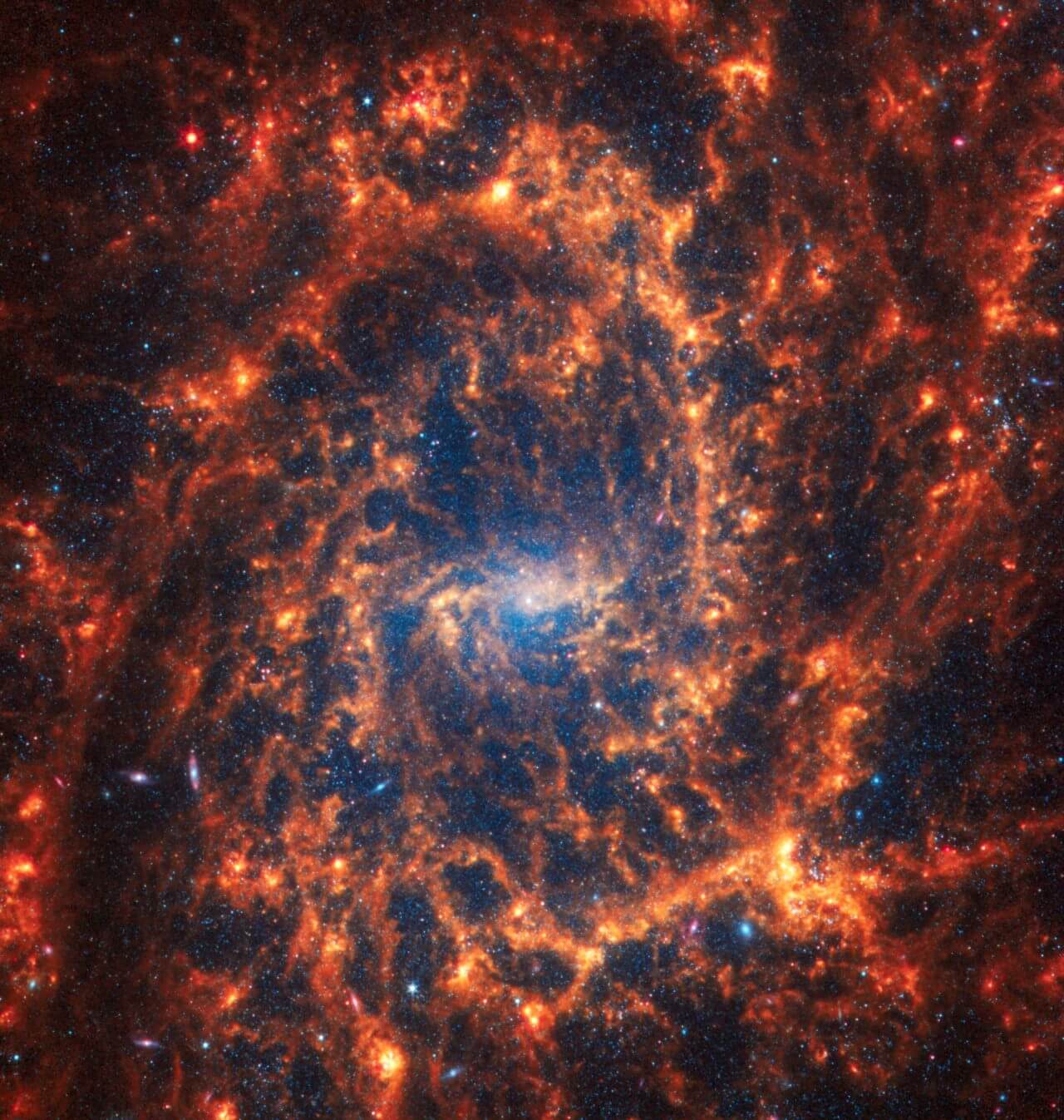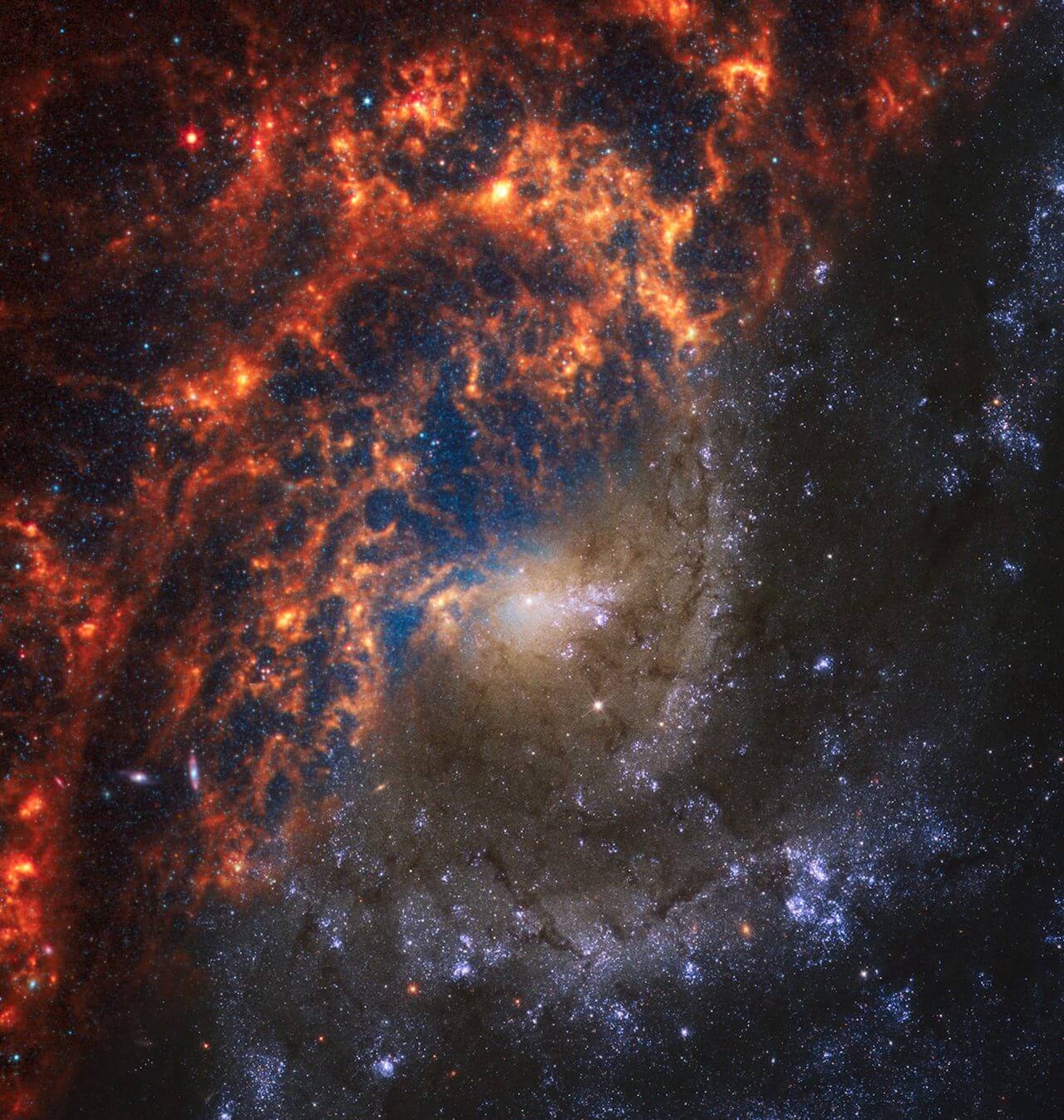This is NGC 2835, a spiral galaxy located about 35 million light-years away in the Hydra constellation. It was created based on data acquired by the Near-Infrared Camera (NIRCam) and the Mid-Infrared Observing Instrument (MIRI) of the James Webb Space Telescope (JWST). Because the Webb Space Telescope primarily observes infrared wavelengths that cannot be seen by the human eye, the colors of published images are colored according to the filters used during acquisition.

According to the Space Telescope Science Institute (STScI), which operates the Webb Space Telescope, the NIRCam data (colored in blue and green) show that infrared radiation from hot young stars that appear blue in visible light is compared to the MIRI data (colored in green) And red).(Colored) shows the infrared rays radiated by dust that has absorbed ultraviolet rays and visible light. The dust scattered throughout the galactic disk is intricately distributed like a skeleton supporting the spiral arms, and hot stars cluster densely here and there to form star clusters.
Next up is NGC 2835, observed by the Hubble Space Telescope's (HST) Wide Field Camera 3 (WFC3). Orientation and size have been adjusted to match a previously published Webb Space Telescope image. Comparing the two images, you can see that the bright part of the dust distribution captured by the Webb Space Telescope is spread out along the chain of dark nebulae seen in the Hubble Space Telescope image.


The observation of NGC 2835 was carried out by the Webb Space Telescope as part of the PHANGS (Physics of High Angle Resolution in Nearby Galaxy) observing project, which targets galaxies in the nearby universe. This project, which includes the Hubble Space Telescope, the ALMA radio telescope array in Chile, and the European Southern Observatory's (ESO) Very Large Telescope (VLT) at the Paranal Observatory in Chile, will provide high-resolution observations using electromagnetic waves of different wavelengths. They have been performed for several years to understand star formation.
The Webb Space Telescope, a new addition to the project, has observed bubble-like and thread-like structures that tell us about the star formation cycle on the smallest scale ever, surprising even researchers who have studied the same galaxy for many years. This means that there is. The image is initially one of 19 nearby galaxies observed by the Webb Space Telescope as part of the PHANGS project, and was released by STScI, the National Aeronautics and Space Administration (NASA) and the European Space Agency (ESA) in January. 29, 2024.
source
- STScI Webb and Hubble observations of spiral galaxy NGC 2835
- STScI NASA's Webb depicts stunning structure in 19 nearby spiral galaxies
- NASA NASA's Webb depicts stunning structure in 19 nearby spiral galaxies
- European Space Agency Webb reveals the structure of 19 spiral galaxies
Text Editing/Syrian Studies Department

“Travel maven. Beer expert. Subtly charming alcohol fan. Internet junkie. Avid bacon scholar.”







More Stories
The ranking of the best survival horror games selected by the IGN US editorial team has been released! Resident Evil RE:2 ranked first
Enjoy a hot cigarette while looking at whales and tropical fish under the sea ⁉︎ “Ploom Dive” is an amazing spatial video experience using Apple Vision Pro
Apple Watch now supports sleep apnea, watchOS 11 released – Impress Watch